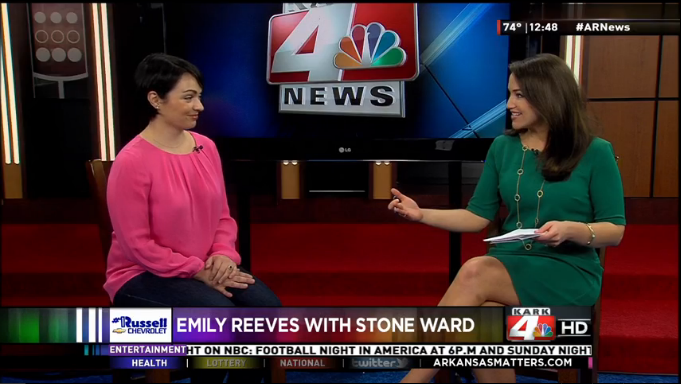Earlier this afternoon, I appeared on KARK News to talk about how high school juniors and seniors thinking about what they are going to do after graduation should start developing a professional brand online now. Here are few things to consider.
Last year, LinkedIn lowered its age requirement to 14 years old, inviting high school students to join the professional networking site. LinkedIn is an easy way to connect with professionals while also exploring work experiences and potential career paths. By reading career development articles, connecting with professionals via LinkedIn, and building a network at a young age, students will realize that the sooner you put yourself in the professional community, the better your chances of finding the opportunity you want.
For students applying to colleges, a LinkedIn profile shows they’re forward-thinking and that they know their skills are transferable. And it shows they are several steps ahead.
When developing a profile, here are some recommendations for students:
-
Create a customized URL. Now that LinkedIn is so heavily used, this can be a challenge for those with common names. But JohnDoe18 is better than the random URL the site assigns you.
-
Have a great headline. This will be one of the first things a recruiter, employer or university admissions professional notices on your profile. Choose a headline that accurately describes and captures who you are. If you were to have a title for your life, your passions and your interests, what would it be?
-
Complete your Summary section. Your Summary section should give potential employers insight on who you are, what your skills are and what you are looking for in your career. Consider including some interesting content around what you as a student can offer and how your skills and specialties could contribute to a work or university setting.
-
Link with adults, including teachers and supervisors at volunteer jobs. One of LinkedIn’s greatest strengths is the ability to branch out from your contacts to other people you don’t know first-hand.
-
Follow Employer, School or University Pages that you are interested in. LinkedIn University Pages are a great way to find and connect with alumni who can help direct you to specific counselors, internships, experiences, and other opportunities. Unsure about the major you’re considering? Why not reach out to alumni of the school you are currently attending or interested in attending for their first-hand experience?
-
List all your experiences: All experiences count and mean that you have learned something in a work setting. If you do not have paid work experience, use the Volunteer Experience and Causes section to list your volunteer experiences and organizations you are involved with. You can also add courses you’ve taken, test scores you’re particularly proud of or languages you speak.
-
Join LinkedIn Groups: LinkedIn Groups are a great place to meet professionals in the industries that interest you. They are also a valuable resource for finding opportunities within your field of interest as well as staying up-to-date on relevant news that relate to your future profession. It’s important to be an active participant in all the groups you join and share interesting articles that you read as well. The more you participate, the more you’ll be noticed by other professionals.
-
Get Recommendations and Endorsements. If you do a volunteer internship at a bike shop, get your boss to write you a glowing recommendation that mentions specific things you did well, like handling customers and always arriving early and staying late. Since endorsements accumulate over time, it’s good to start early.
-
Highlight Awards. If you’re in a serious academic club like the debate team and you win awards, or your essay wins a nationwide writing competition, potential employers want to know. Create an Honors & Awards section on your profile and keep it up to date.
-
Follow up on in-person meetings with a LinkedIn request. It’s not always expected that college students have a LinkedIn profile, and it will probably be more of a surprise if someone in high school has one. If you meet important professionals at a school banquet, through your parents or at a summer job, shock them (in a good way) by sending a request to connect afterward. It will show them you’re already ambitious enough to be thinking about your career and that you valued meeting them.
Personal Blog
High school students have a point-of-view and have unique experiences they can share. A personal blog is a way to establish your personality online and help you hone your voice early. Blogs are easy to set up and encourage creativity in format and style. You can make you blog private and available only to those you want, or you can make it public. The existence of a blog provides an incentive to write and write frequently, which means you will get better and better at writing as you continue to evolve your blog.
Employers and schools will Google students that are especially interested in and finding a well-written blog that showcases the students personality helps people get to know you.
Researching a Career
Some high school students will be researching colleges, others a career. Regardless of whether a student is planning to attend college, go to a trade school, start their own business, or go straight to work, they should take time to research the career they want in order to find what the best route is for them.
LinkedIn is a great place to start this, and a blog can attract people that have the same interests who may be able to advise on directions. Use Google liberally and research all your options, comment on blogs, ask for advice and talk to people that actually do what you want to do.


